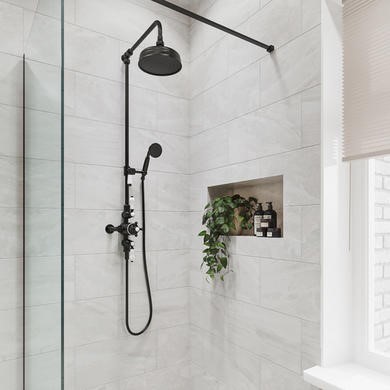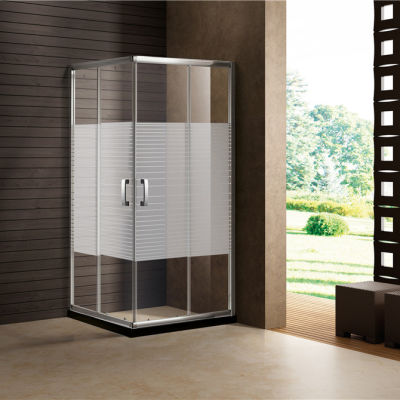The article in the next paragraphs relating to How to Install a Freestand is indeed remarkable. Read it for your own benefit and figure out what you think of it.

An effective shower setup needs careful planning as well as a lot of job. For the most part, you will need to do three kinds of jobs: framing wall surfaces, setting up the plumbing, as well as finishing wall surfaces.
Prep work
First of all, you should decide on the sort of shower that you want to mount. It is necessary to establish whether the chosen shower can managing specific systems and also can control a secure level of water with the central heating boiler. Many shower units nowadays are created to be adaptable to different water pressures (such as kept warm water and also cold keys).
It is also vital to take into consideration the water pressure and the planning of the piping and also water drainage for the shower
Various Kinds Of Shower Units
Method
Depending upon the kind of shower you wish to install, the shower head must either be suited order to prevent its contact with the water in the bathroom below or the base tray, or it has to have a check shutoff.
Before starting, it is advisable to note the settings of the shower head and control, and also to prepare the pipe-work involved. In addition, the drain system to remove the drainage will certainly need to be intended. Both positions of the wire path and also the shower switch will certainly also require to be considered if an immediate or electric shower system is being installed.
Utilize the guideline guide provided with the shower unit to fit the shower control.Before fitting the pipes that will supply the water to the shower system, it is essential to remove the water supply. In order to shield the pipelines, they ought to be offered a waterproof covering and likewise fitted with isolating shutoffs. The pipelines can then be hidden into the wall as well as plastered over to neaten the general look.
Fit the base tray, shower head, and fittings.
Attach the major shower control to the pipes that will certainly be providing the water (This may require a female screw thread adapter).
Reconnect the supply of water and examination the pipelines for any type of leakages, as some might need tightening up.
If you are installing an electric shower, keep in mind to switch off the electricity supply prior to making any electric links. Once these links have been made (there must be guidance within the user's manual), the power supply can be switched back on.
Changing Water Stress to Fit Your Shower
The cold water reservoir can be lifted to a greater elevation (often as low as 150mm (6inches)) by installation a solid wooden support under it - possibly composed of struts as well as blockboards. If you select this choice, the major and distribution pipes will likewise have to be increased to satisfy the new elevation of the storage tank.
Alternatively, a booster pump (a solitary pump or a dual/twin pump) can be fitted. Whichever kind is picked, it needs to be linked into the power supply in order to operate.
Piping as well as Drainage
It is best to use 15mm size supply pipes, and make the runs to the shower as short and also straight as possible so as to keep optimal stress as well as reduce heat loss. In addition, by reducing using elbow joints for pipeline corners, you can lower the resistance in the flow of the water supply. You can attain this by bending the pipes rather.
Many Usual Mistakes
How Do You Install a Shower? Follow This Guide
Installing a Shower at a Glance
Tools & Materials: Level, electric drill, caulk, hole saw, cedar shims, shower unit Step 1: Drill pilot holes Step 2: Prep fixture holes Step 3: Move unit into place Step 4: Caulk corners and base Step 5: Attach door Step 6: Install shower pan Whenever plumbing is involved in a DIY project, people worry about what might go wrong. The truth is that installing a shower isn’t that complicated, and you can save a lot of money by doing it yourself. You shouldn’t need to make any alterations to your plumbing to complete the job, and most of the tools you need will be provided in your new shower kit.
Can I Install a Shower Myself?
Even if you’ve never installed a shower before, you’ll find this to be a project that is perfectly suited for DIYers with a moderate level of experience. Whether you're doing a bathtub conversion or installing a new stall, most of what you need comes in shower kits that you can purchase from a hardware store. The first thing you need to do is determine what type of shower stall you want.
Single-panel stalls are the easiest to install because they come preassembled. All you need to do is put them in place. Multi-panel showers require a few additional steps, but you’ve got more control over the appearance of your unit. Multi-panel units are also much easier to handle if you’re going to do the installation without any help.
Be sure to take all appropriate safety precautions, such as wearing eye protection and gloves. When you’re removing or installing a shower unit, you might kick up debris that could hurt your eyes. You’ll also need to work with equipment that will get extremely hot, so be sure to have safety gloves handy.
Tools and Materials
2- to 4-foot level Electric drill with a 1/8-inch drill bit Caulk 2-inch hole saw Cedar shims The unit itself Before You Begin: Prep the Space
It’s highly important to measure your space accurately before putting the stall in. Measuring from the floor upward and from each corner outward will ensure you’ve got the right measurements. What you’re looking for is where the plumbing apparatuses are going to come through the stall. Transfer these measurements over to the back of your unit by drawing the locations of these holes using a pencil or marker.
Pull out your old shower and make sure to scrape off all the old caulking. Be thorough because you want to work with smooth surfaces for the best installation. Once you’ve pulled out your existing shower, you need to make sure that the floor is clean and dry. The best way to clean debris is with a shop vacuum, as it’ll soak up water and dirt together.
If you’re experiencing any plumbing issues, such as low water pressure, this is a perfect opportunity to solve them. Make sure that the pipes themselves are not in need of patching and clean your showerhead. When you turn the water back on after your project, check the pipes for signs of wear or disrepair. Anything beyond minor repairs should be handled by a plumber, and this is the best time to bring in a professional.
If the floor has any moisture at all, don’t proceed until it’s completely dry. The last thing you need is for the floor to rot or invite mold and mildew into your base. Once everything is dry, apply waterproof wallboard to the walls. This can be attached with screws or nails, then sealed with caulk so that water doesn’t seep into any crevices.

As an avid reader on How to Install a Direct-to-Stud Shower Enclosure, I assumed sharing that piece of content was essential. Are you aware of another individual who is fascinated by the topic? Be sure promote it. Thank you for your time. Don't hesitate to check our site back soon.
Book Services